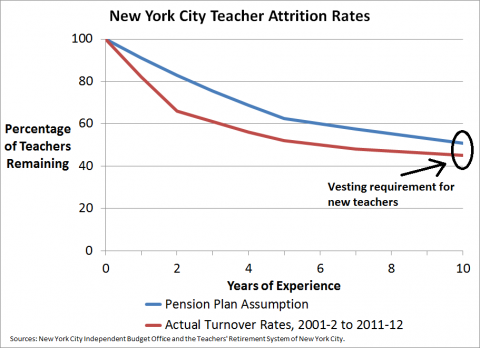If you’re following the school closure / school turnaround debate, the story in today’s NY Times – “In Sharp Rise, 47 City Schools May Close Over Performance” – will offer some insights, if not a great deal of , er, closure.
We do know for certain that closing a school for performance reasons is more than likely an excuse to restructure that school. “In the eight years since Mayor Michael R. Bloomberg has used school closings as a cornerstone of his school reform strategy,” says the Times, “91 schools have been shuttered and replaced with new schools.”
Thus, school closure is just another tool in the school reform repair kit. Does it work? Is the glass half-full?
Andy Smarick made a persuasive case for closure in a controversial story in Education Next last year: “The Turnaround Fallacy: Stop trying to fix failing schools. Close them and start fresh.” Overall, Andy wrote,
[S]chool turnaround efforts have consistently fallen far short of hopes and expectations. Quite simply, turnarounds are not a scalable strategy for fixing America’s troubled urban school systems.
See Jamie and Terry’s recent posts on Flypaper, here and here, in which they discuss what’s happening in Ohio. As Terry writes, “some form of triage forcing the closure of walking-dead schools” is in order.
Andy posted “another indictment of `turnarounds’” on Flypaper just last March, quoting from a Tom Loveless Brookings study:
It is highly unlikely that a low-performing school becomes a high-performing school. The chances (four out of 290) are less than one out of seventy.
We know that Arne Duncan was a seriel closer in Chicago and he has made no secret of the feds’ determination to go after the nation’s lowest performing schools. But he seems to be mellowing. Last March Duncan admitted to a group of urban superintendents and board members at a Council of the Great City Schools’ conclave that his goal of turning around 1,000 schools a year was a bit of pie in the sky, but “the answer isn’t inaction.”
I wonder if this Education Week headline from last year had anything to do with it: “School Closings May Be Root of Chicago Student Deaths”? According to the story:
Since 2005, dozens of Chicago’s public schools have been closed and thousands of students reassigned to campuses outside their neighborhoods — and often across gang lines — as part of Renaissance 2010, a program launched by Mayor Richard Daley when Duncan was Chicago Public Schools chief.
While the plan has resulted in replacing failing and low-enrollment schools with charter schools and smaller campuses, it has also led to a surge in violence that has increasingly turned deadly, many activists, parents and students say.
Ouch.
While the research jury may still be out on the turnaround versus closure question, New York City has at least come to appreciate the human dimension. According to the Times, instead of just announcing a school closure, as it has done in the past, this year school officials are meeting with parents and staff “before making a final decision.” Say it ain’t so, Joe? New York’s going soft?



